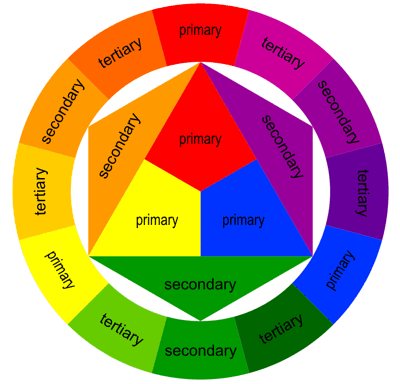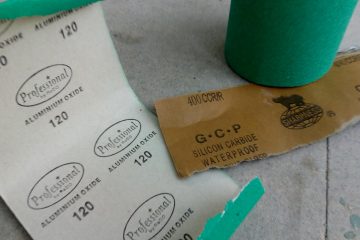If you have a look out of your window, or go onto your balcony or into your garden, you can hopefully see some signs of spring in the unfurling foliage. There are all kinds of greens out there right now and your task is to notice all the wonderful variations and try to recreate some of them with your art materials.

If you have a look at this colour wheel you’ll see that green is made from two primary colours: yellow and blue. Green is therefore a secondary colour. Differing ratios of these colours produce a range of greens when mixed.
So mixing your paints means you don’t just have to use the green you have in your palette or the green pencil.
If you are using pencil then you can cross hatch the yellow and blue to give the impression of green. This is know as optical mixing because it’s the eye that perceives green instead of physical mixing of paint.
You can extend this range of greens by using different blues and yellows. Different brands have differing names for these, but common ones include lemon yellow, yellow ochre, French ultramarine and cyan.
The task is to notice and recreate colours: can you try making a bright grass green, or a green that’s darker or in the shade for example? Tip: darker greens usually have more blue in, but that can depend on whether the blue is cool or warm…
You don’t really need to draw the leaves, bushes and trees for this exercise but if you like you can do this too. Just make lots of smallish squares of different greens on paper and see what happens, it can be really relaxing and quite absorbing to do and teaches you about an aspect of colour theory in a practical way.
In the nationally recognised 5 Ways to Wellbeing, “taking notice” is good for our mental health as it helps us to see the world in new and fresh ways and can give us time and space to focus. “Keep learning” is about gaining new skills or refining existing ones and can give us a sense of achievement and the motivation to try more things.
Have fun trying this with other primary to secondary colour mixes too…


